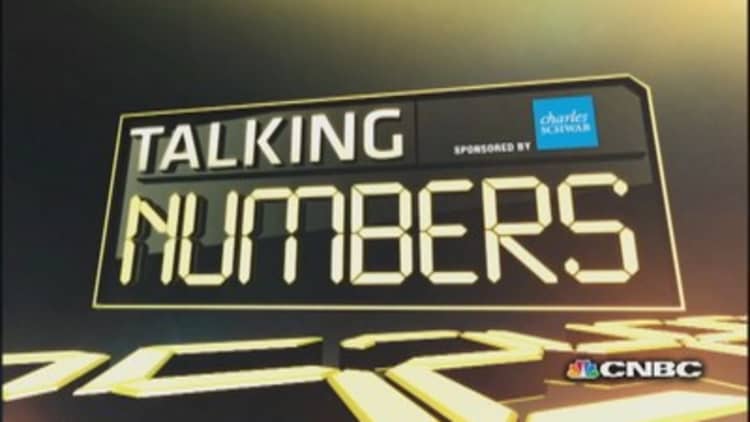
The market appears to be bearish on fear.
One of the most important measures of expected risk, the CBOE Volatility Index (the "VIX") has sold off considerably in the past several days. After trading as high as 17.5 on April 15, it closed at 13.19 on Tuesday.
The VIX is sometimes called the "fear index" because it measures how much investors are willing to pay to protect their portfolio. Specifically, the VIX measures prices for put and call options on the S&P 500 index. The higher the VIX, the more volatility investors expect.
So is a low VIX signaling too much market complacency? After all, geopolitical tension remains high and earnings have been mediocre at best.
(Read: P&G, Boeing earnings loom large for Wall Street)
According to Steve Cortes, founder of Veracruz TJM, investors should use a lower VIX as a buying opportunity to protect against risks in the market.
"When people aren't worried, you should be worried," said Cortes. "There's an old maxim about insurance: You buy insurance not when you have to but when you can. And, you can buy insurance here for what I think are pretty cheap prices."
Cortes says the world still has a lot of risks, both geopolitical and economic.
"When I look at the market in the last four weeks, we saw an enormous churn within sectors," said Cortes. "The indices didn't necessarily move all that much, but when you look at the highfliers—names like Netflix, Tesla, Facebook—[they] got absolutely decimated at the same time energy—a huge underperformer last year—went nuts to the upside."
Over the past 30 days, the S&P 500's energy sector is up 7 percent while the financial and consumer discretionary sectors are down 2 percent. The information technology sector is down 0.8 percent as well.
"All of that tells me the world is dangerous," said Cortes. "The economic recovery is uncertain. Because of that, insurance here is cheap. Yes, buy some insurance."
(Read: )
Talking Numbers contributor Richard Ross, global technical strategist at Auerbach Grayson, agrees that investors should buy protection at these levels.
"It is cheap and it does pay to be prudent here," said Ross. "But, I would add that I am always reticent to use phrases like 'oversold', 'overbought', [or] 'too complacent'."
While the VIX is nowhere near its record of 89.53 set in October 2008—or even close to its earlier high of 45.74 set in October 1998—Ross doesn't necessarily think it will jump soon.
"It does make sense to [look] for an expansion of volatility as stocks pull back," said Ross. "But, it doesn't mean that stocks are going to move lower. It doesn't mean that volatility is going to spike any time soon. In fact, I don't use the VIX as a predictive indicator. It's more of a coincident indicator. When stocks go down, the VIX rises."
That leads Ross to conclude that the VIX could be a buy even if he doesn't think it will predict where the market is headed.
The VIX "doesn't really give me a very good tell on the market here other than to say insurance is cheap," said Ross. "So, it makes sense to buy when you can, not when you have to."
To see the full discussion on the VIX, with Cortes on the fundamentals and Ross on the technicals, watch the video above.
-----
Follow us on Twitter: @CNBCNumbers
Like us on Facebook: facebook.com/CNBCNumbers


